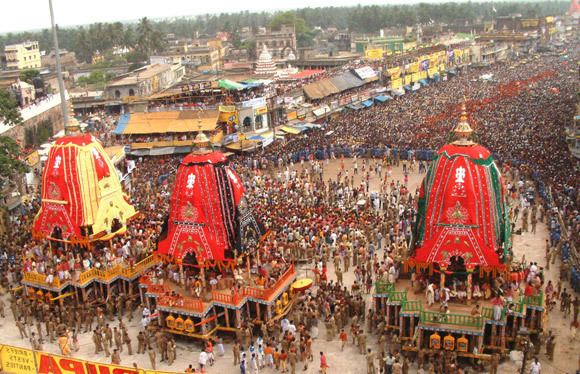 | ||
ratha aagatha kotturu guru basaveshwara temple chariot falls
Ratha (Sanskrit: रथ, rátha, Avestan raθa) is the Indo-Iranian term for a spoked-wheel chariot or a cart of antiquity.
Contents
- ratha aagatha kotturu guru basaveshwara temple chariot falls
- Kotturu ratha fall
- Textual evidence
- Indus Valley Civilization
- Proto Indo Iranians
- Remains
- In Hindu temple festivals
- Rathas buildings
- Rathas in architecture
- Rathas in popular culture
- References
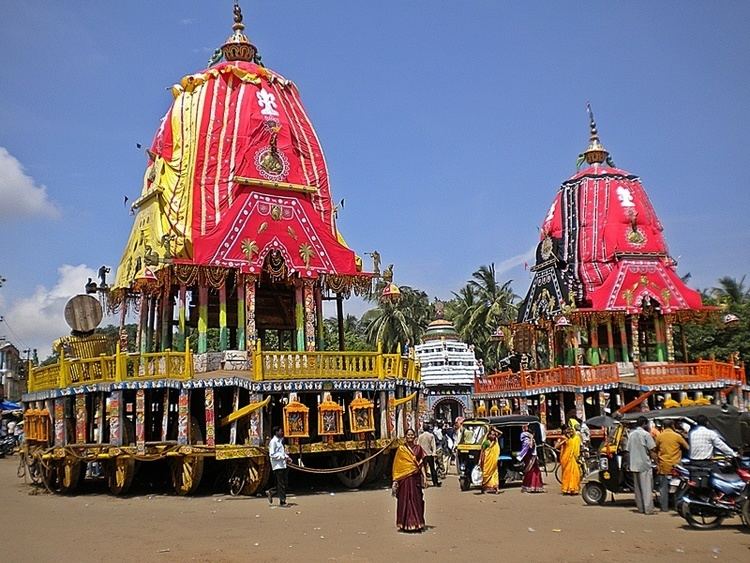
The Rigvedic word rá-tha does not denote a war-chariot like those of Andronovo, Egypt, Greece, and Rome. The word is from √ṛ ‘go’ giving primary rá-tha ‘a goer, car, vehicle’. Similar formations exist with the suffix -tha: ártha ‘goal’, ukthá ‘saying’, ǵāthā ‘song’ etc. The rigvedic ratha is described as pṛthu ‘broad’ 1.123.1; bṛhat ‘tall, big’ 6.61.13; variṣṭha ‘widest’ 6.47.9. It has space not for 1 only or 2 (i.e. the driver and the warrior with his spear and bow) but for 3: it is said to be trivandhurá (1.41.2; 7.71.4) and then to carry 8 aṣṭāvandhurá (10.53.7)
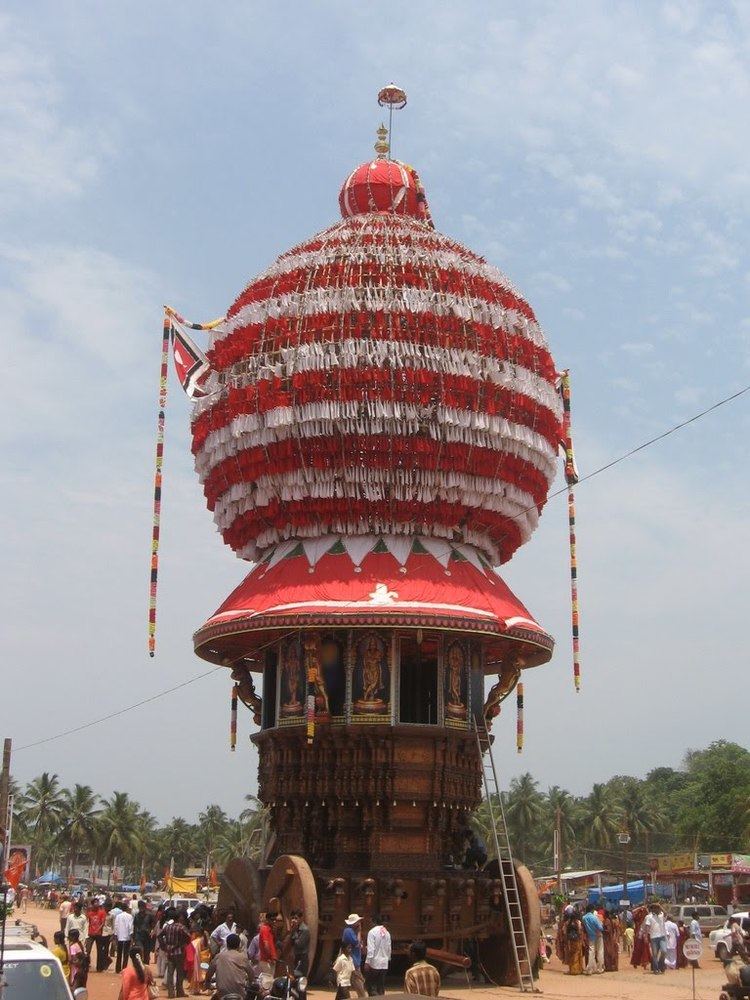
Kotturu ratha fall
Textual evidence
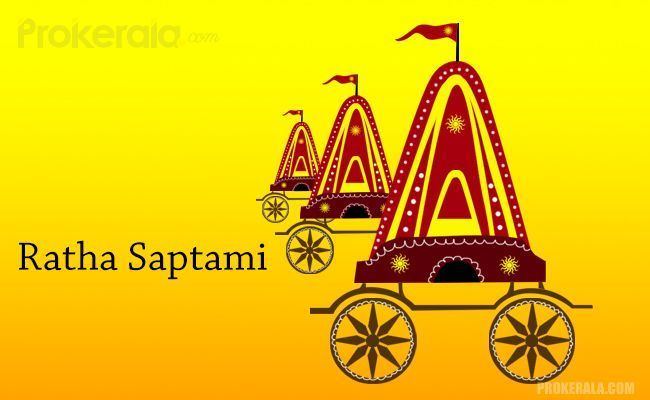
Chariots figure prominently in the Rigveda, evidencing their presence in India in the 2nd millennium BCE. Notably, the Rigveda differentiates between the Ratha (chariot) and the Anas (often translated as "cart"). Rigvedic chariots are described as made of the wood of Salmali (RV 10.85.20), Khadira and Simsapa (RV 3.53.19) trees. While the number of wheels varies, chariot measurements for each configuration are found in the Shulba Sutras.
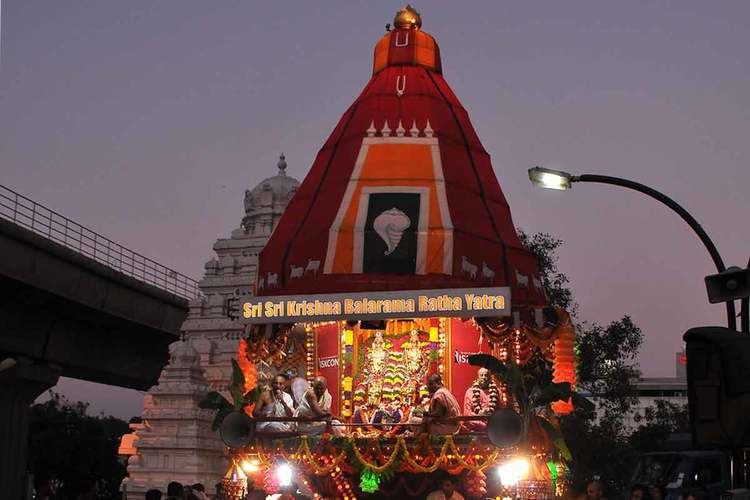
Chariots also feature prominently in later texts, including the other Vedas, the Puranas and the great Hindu epics (Ramayana and Mahabharata). Indeed, most of the deities in the Hindu pantheon are portrayed as riding them. Among Rigvedic deities, notably Ushas (the dawn) rides in a chariot, as well as Agni in his function as a messenger between gods and men. In RV 6.61.13, the Sarasvati river is described as being wide and speedy, like a (Rigvedic) chariot.
Indus Valley Civilization
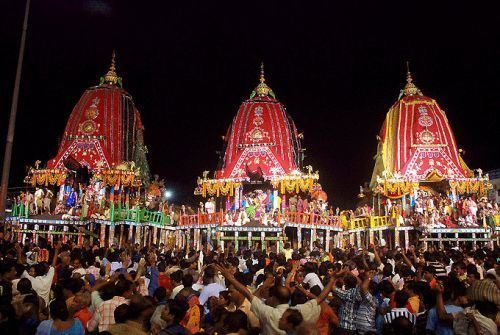
At Harappa in modern-day Pakistan we find evidence for the use of terracotta model carts as early as 3500 BC during the Ravi Phase at Harappa.

During the Harappan Period (Harappa Phase, 2600...1900 BC) there was a dramatic increase in terracotta cart and wheel types at Harappa and other sites throughout the Indus region. The diversity in carts and wheels, including depictions of what may be spoked wheels, during this period of urban expansion and trade may reflect different functional needs, as well as stylistic and cultural preferences. The unique fonns and the early appearance of carts in the Indus valley region suggest that they are the result of indigenous technological development and not diffusion from West Asia or Central Asia as proposed by earlier scholars.
Proto-Indo-Iranians
Development of the spoke-wheeled chariot is associated with the Proto-Indo-Iranians. The earliest fully developed war chariots known are from the chariot burials of the Andronovo (Timber-Grave) sites of the Sintashta-Petrovka culture in modern Russia and Kazakhstan dating from around 2000 BCE.
The chariot must not necessarily be regarded as a marker for Indo-European or Indo-Iranian presence. According to Raulwing, it is an undeniable fact that only comparative Indo-European linguistics is able to furnish the methodological basics of the hypothesis of a "PIE chariot", in other words: "Ausserhalb der Sprachwissenschaft winkt keine Rettung!"
The earliest evidence for chariots in southern Central Asia (on the Oxus) dates to the Achaemenid period (apart from chariots harnessed by oxen, as seen on petroglyphs). No Andronovian chariot burial has been found south of the Oxus.
Remains
There are a few depictions of chariots among the petroglyphs in the sandstone of the Vindhya range. Two depictions of chariots are found in Morhana Pahar, Mirzapur district. One shows a team of two horses, with the head of a single driver visible. The other one is drawn by four horses, has six-spoked wheels, and shows a driver standing up in a large chariot-box. This chariot is being attacked, with a figure wielding a shield and a mace standing at its path, and another figure armed with bow and arrow threatening its right flank. It has been suggested (Sparreboom 1985:87) that the drawings record a story, most probably dating to the early centuries BC, from some center in the area of the Ganges–Yamuna plain into the territory of still neolithic hunting tribes. The drawings would then be a representation of foreign technology, comparable to the Arnhem Land Aboriginal rock paintings depicting Westerners. The very realistic chariots carved into the Sanchi stupas are dated to roughly the 1st century.
The earliest chariot remains that have been found in India (at Atranjikhera) has been dated to between 350 and 50 BCE. There is evidence of wheeled vehicles (especially miniature models) in the Indus Valley Civilization, but not of chariots.
Indus valley sites have offered several instances of evidence of spoked wheels. Archaeologist B. B. Lal argues that finds of terracotta wheels painted lines (or low relief lines) and similar seals indicate the existence and use of spoked wheel chariots in Harappan Civilization, as showed in the Bhirrana excavations in 2005-06. Bhagwan Singh had made a similar assertion and S.R.Rao had presented evidence of chariots in bronze models from Daimabad (Late Harappan). The archaeologists at Daimabad are not unanimous about the date of the bronzes discovered there. On the basis of the circumstantial evidence, M. N. Deshpande, S. R. Rao and S. A. Sali are of view that these objects belong to the Late Harappan period. Looking at the analysis of the elemental composition of these artifacts, D. P. Agarwal concluded that these objects may belong to the historical period. His conclusion is based on the fact these objects contain more than 1% Arsenic, while no arsenical alloying has been found in any other Chalcolithic artifacts.
In Hindu temple festivals
Ratha or Rath means a chariot or car made from wood with wheels. The Ratha may be driven manually by rope, pulled by horses or elephants. Rathas are used mostly by the Hindu temples of South India for Rathoutsava (Car festival). During the festival, the temple deities are driven through the streets, accompanied by the chanting of mantra, hymns, shloka or bhajan.
Ratha Yatra is a huge Hindu festival associated with Lord Jagannath held at Puri in the state of Orissa, India during the months of June or July.
Rathas buildings
In some Hindu temples, there are shrines or buildings named rathas because they have the shape of a huge chariot. Or because they contains a divinity like does a temple chariot.
The most known are the Pancha Rathas (=5 rathas) in Mahabalipuram, although not with the shape of a chariot.
Another example is the Jaga mohan of the Konark Sun Temple in Konarâk, built on a platform with twelve sculptures of wheels, as a symbol of the chariot of the Sun.
Rathas in architecture
In Hindu temple architecture, a ratha is a facet or vertical offset projections on the tower (generally a Shikhara).
Rathas in popular culture
Artist's pseoudonym of Tori J. O'Shea, photographer and graphic novelist.
